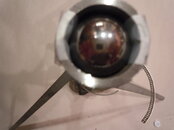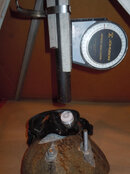I apologize if this is off the topic os testing the masks but this is my datapoint.
Flame it and use baby shampoo mixed with two parts water. Very lightly apply it when you get on the boat or get to the beach. Only rinse by lightly wetting it and dumping it out. If you rinse too much or have to mask clear too many times it will start to have a problem.
Conclusion. The flame can completely remove the manufacturing residue on its own and a surfactant is required to prevent fogging. It doesn't take much but some is required so if it gets washed away fogging will return were surfactant residue no longer is present.
I have seen toothpaste treatment that was ineffective which is probably because the method relies on complete perfection which may not occur due to bad toothpaste or bad technique. The flame makes the removal obvious because you can see it burn away. The flame is not effective at the very edges which I find of no consequence.
Flame it and use baby shampoo mixed with two parts water. Very lightly apply it when you get on the boat or get to the beach. Only rinse by lightly wetting it and dumping it out. If you rinse too much or have to mask clear too many times it will start to have a problem.
Conclusion. The flame can completely remove the manufacturing residue on its own and a surfactant is required to prevent fogging. It doesn't take much but some is required so if it gets washed away fogging will return were surfactant residue no longer is present.
I have seen toothpaste treatment that was ineffective which is probably because the method relies on complete perfection which may not occur due to bad toothpaste or bad technique. The flame makes the removal obvious because you can see it burn away. The flame is not effective at the very edges which I find of no consequence.







